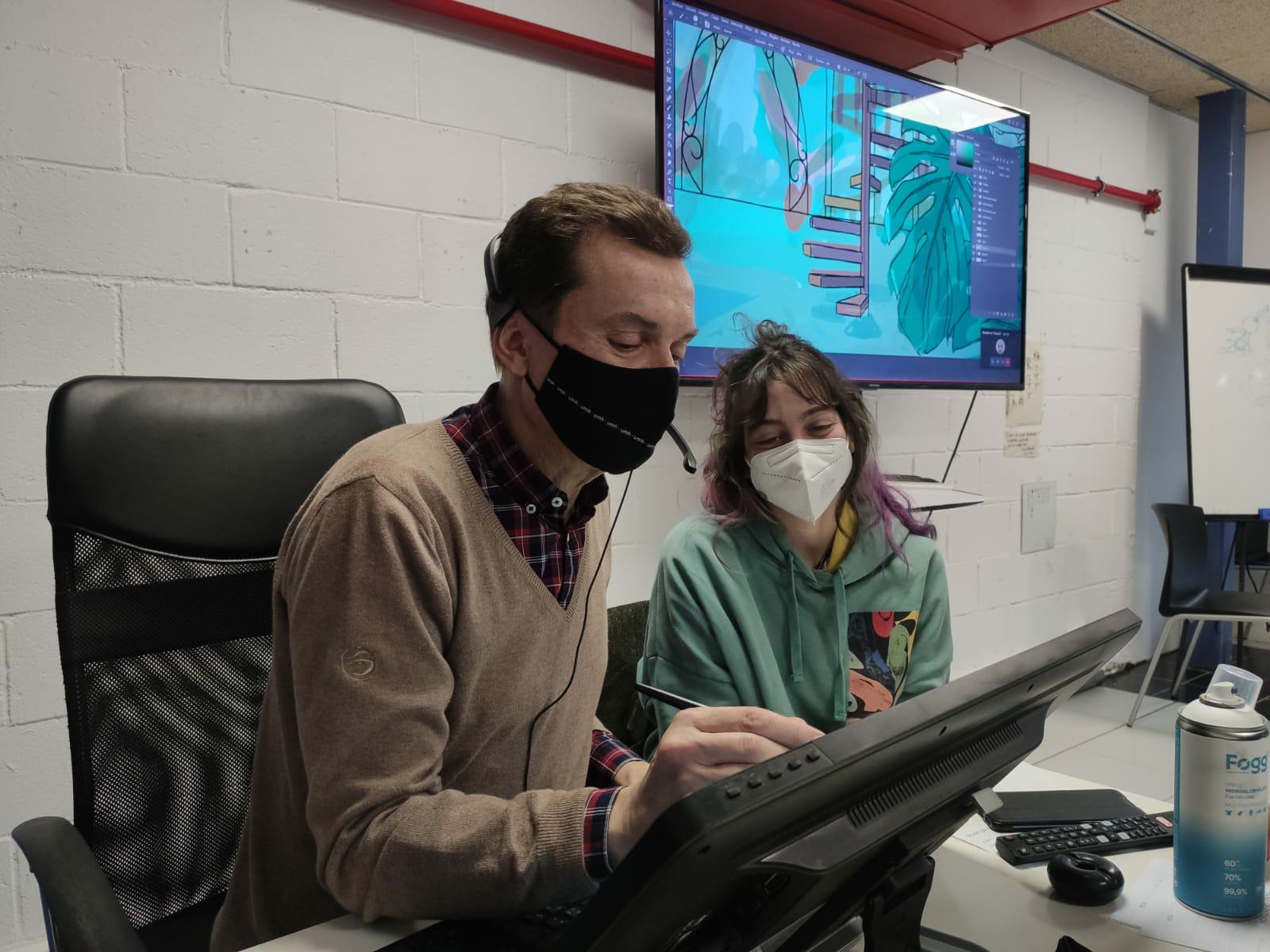During the month of February, the filmmaker and illustrator Arly Jones gave a specialised training course on backgrounds for animation at our school. It was given to a mixed group of students from the 2nd year of Animation and the school’s International Master in 2D/3D Animation. The module consisted of unravelling the secrets of animation scenarios.
We took the opportunity to talk to Arly Jones about the role of backgrounds in animation and audiovisuals in general:
What do we mean by background in Animation?
The background is to the film what the smell of freshly baked bread in the bakery oven is to the film. You pick it up subconsciously and it places you in an emotion, a feeling, an idea.
And what is its main function?
We could say that a background is like a supporting actor that makes a protagonist shine. In an animated film, the background is the element that blends everything together, the canvas where everything happens.
What information does it communicate to the public?
The background is the emotional part of the script in non-animated image format. It allows the actor to place himself in the context of his performance, to reinforce his message to the audience.
During this month you have given a specialised training in backgrounds at L’Idem.
Yes, a training aimed at working on the conscious knowledge of the elements that make up the backgrounds. The students of the school have created a background in several versions with the entity of a main actor. My aim was that, on the basis of this work, each student would become aware of the importance of the backgrounds, of their components and secrets, of putting them into practice.
What skills have they acquired in this practice?
In this training they have learned to treat the landscape as a design element. We recognise and study in depth all the elements that make up a setting, perspective, organic elements, architecture, lights, textures, colour…
What final exercise have you proposed to them?
Create a setting freely proposed by the students, placing it in an ideal context: “Where would you like to be?”
Finally, how do you value this experience?
I value it very positively. The students have given themselves unreservedly to the exercise for a week, in an orderly, hard-working way and with good results.
The most important thing they have discovered has happened in the work process, seeing why some things don’t work, why others do it better and knowing how to make the best decision in every tiny detail, that’s the learning experience.

